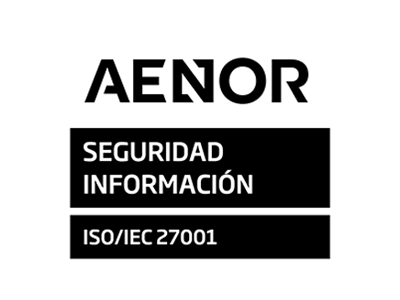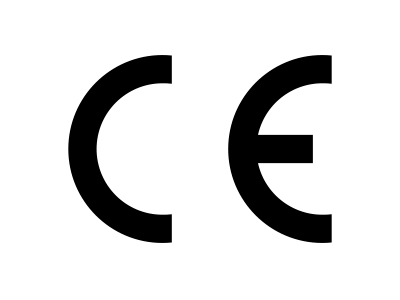A Beginners Guide to Knowledge Graphs
April 19th 2023

Have you ever tried to make sense of a large and complex dataset, only to find yourself drowning in a sea of information? That’s where knowledge graphs come in – they provide a way to organize and connect data in a meaningful way, making it easier to understand and analyze.
Are you curious about the latest advancements in technology and how they can benefit your business? If so, you may have heard about knowledge graphs. This cutting-edge technology is making waves in the world of data management and for good reason. By organizing and linking data to mimic human cognition, knowledge graphs can unlock a wealth of insights and opportunities.
But what exactly are knowledge graphs, and how can they be used to transform your business? In this post, we’ll explore the basics of knowledge graphs and how they work, as well as their applications in various industries. Whether you’re a business owner looking to improve your data management strategy or a tech enthusiast, this guide is the perfect introduction to the power of knowledge graphs.
What are knowledge graphs?
A knowledge graph is a digital representation of structured knowledge that is used to facilitate understanding and reasoning about data. It’s typically made up of a set of interconnected nodes and edges that represent entities (such as people, places, and things) and the relationships between them. Knowledge graphs are often used to represent complex data in a more intuitive and visual way, making it easier to understand and analyze.
The importance of knowledge graphs
As the amount of data continues to grow exponentially, it becomes increasingly difficult to manage and extract insights from it. This is where knowledge graphs come in. Knowledge graphs are a way of organizing and linking data to mimic human cognition. They allow us to connect disparate pieces of information and find relationships between them that might not otherwise be apparent. This makes knowledge graphs a powerful data management, analysis, and discovery tool.
Benefits of knowledge graphs
1. Efficient and effective data integration
By connecting disparate pieces of data, knowledge graphs can provide a unified view of data that is more complete and accurate than traditional data management methods.
2. Uncover hidden relationships and insights
Because knowledge graphs allow for complex relationships to be represented in a visual and interconnected way, it can be easier to see patterns and connections that might not be apparent in other forms of data analysis.
3. Improve search results and recommendations
By using the relationships between entities in the graph, search algorithms can provide more accurate and relevant search results. Similarly, recommendation systems can use the graph to make more personalized and targeted recommendations based on a user’s interests and behavior.
4. Unified view of data
Rather than having data siloed in different systems, knowledge graphs bring all of that information together in one place. This makes it easier to find relationships between pieces of data, which can lead to new insights and opportunities. For example, a knowledge graph might link a customer’s purchase history with their social media activity, allowing a business to see how their marketing efforts are impacting sales.
5. Dynamic
As new data is added or old data is updated, the knowledge graph can be updated to reflect those changes. This means that the insights gleaned from the knowledge graph are always up-to-date and relevant.
How do knowledge graphs work?
Knowledge graphs are visual representations of relationships between entities that are created by extracting and organizing data from various sources such as databases, documents, and the web. Nodes represent entities, while edges represent the relationships between those entities. Knowledge graphs are graph-based, which allows for complex relationships to be easily analyzed and understood. Data must be transformed into a usable format by cleaning it, removing duplicates, and standardizing its format before it can be loaded into the graph and connected with other nodes and edges. Once created, knowledge graphs can be queried using natural language or structured queries to retrieve information and make connections between different pieces of data.
Common uses of knowledge graphs
There are many different ways that knowledge graphs can be used, depending on the needs and goals of the organization. Some common uses of knowledge graphs include:
1. Search engines
Knowledge graphs are often used to improve search engine results by providing more context and meaning to search queries. For example, if you search for “Tom Hanks,” a knowledge graph might provide information about Tom Hanks’s career, family, and movies, as well as related entities such as actors and directors.
2. Artificial intelligence
Knowledge graphs are often used to improve the performance of artificial intelligence systems by providing them with a structured and annotated representation of knowledge. This can help AI systems to better understand and interpret data and to make more informed decisions.
3. Business intelligence
Knowledge graphs can be used to improve business intelligence by providing a visual and intuitive representation of data that can be easily analyzed and understood. This can help businesses to make more informed decisions about strategy, marketing, and operations.
Future of knowledge graphs & AI
With the continuous growth of data, knowledge graphs are set to become even more essential in data management and analysis. In the future, we can expect to see more creative applications of knowledge graphs in various industries such as healthcare, finance, and e-commerce.
In the realm of artificial intelligence and machine learning, knowledge graphs are predicted to play an increasingly crucial role. By offering a unified view of data that is easy to analyze and query, knowledge graphs can enhance the accuracy and efficiency of machine learning algorithms.
In Summary
To sum up, knowledge graphs are a powerful tool for organizing and comprehending intricate data. They have the potential to enhance search outcomes, amplify the performance of AI systems, and refine business intelligence. By presenting knowledge in a structured and visual format, knowledge graphs can assist in comprehending and analyzing data, thereby aiding organizations to arrive at well-informed decisions.
While building and managing knowledge graphs can be complex, there are several tools and frameworks available to make the process easier. The prospects for knowledge graphs look promising, and we can anticipate sustained development and innovation in this exciting field.
Take a look at how we at dezzai make the most of knowledge graphs to provide AI powered solutions.
Ready to see what we can do for you?
In the right hands, artificial intelligence can take human performance to a hitherto unimaginable level. Are you ready for evolution?




